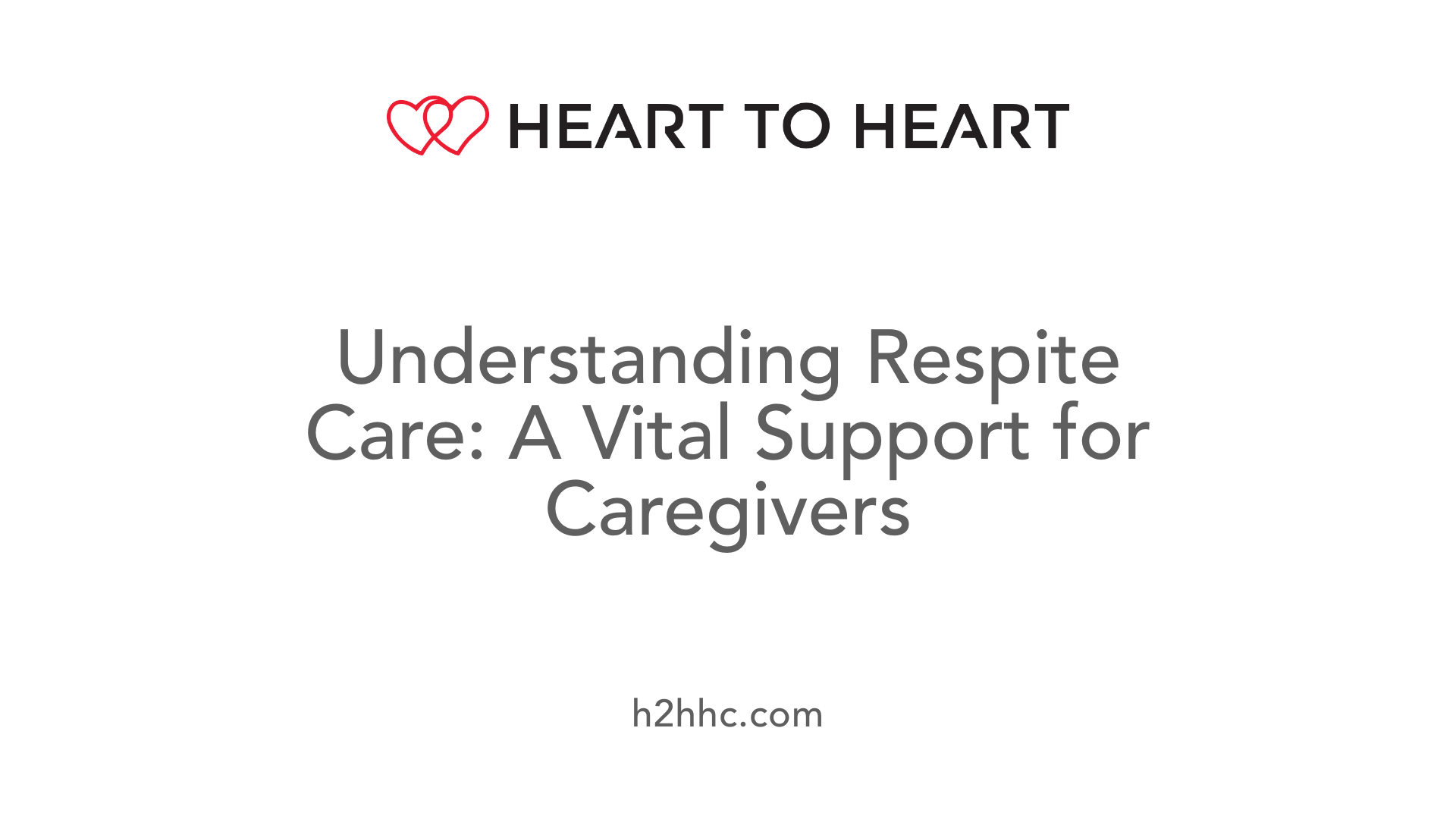How Respite Care Alleviates the Strain of Caregiving
April 9, 2025

Respite care is a misunderstood yet crucial service for primary caregivers. This service, offering temporary relief, is pivotal for those looking after loved ones with chronic illnesses, disabilities, or advanced age-related conditions. As the caregiving environment grows increasingly demanding, respite care emerges as an essential support system, counteracting the physical, emotional, and mental exhaustion that many caregivers face.

Respite care provides temporary relief to primary caregivers, allowing them essential breaks to recharge. This crucial support helps mitigate caregiver burnout—a state where caregivers experience emotional and physical exhaustion. More than 60% of caregivers report feeling overwhelmed, demonstrating the necessity of taking time off.
The structure of respite care varies significantly. Options include in-home professional care, adult day programs, and short stays at residential facilities. Such flexibility accommodates diverse caregiver needs, promoting their well-being.
The beneficial aspects of respite care go beyond mere breaks. It enhances caregivers’ health by reducing signs of burnout, such as irritability and anxiety. Caregivers can reflect on their role, gain new strategies, and return to caregiving duties invigorated and with greater patience.
Furthermore, the emotional and physical toll of caregiving can disrupt personal well-being, emphasizing the necessity for breaks. The time away not only nourishes caregivers but also positively impacts care recipients, providing them with opportunities for social engagement and stimulation. This collaborative approach enhances the overall caregiving experience, safeguarding the health and happiness of both caregivers and those they care for.
Utilizing respite care effectively allows caregivers to manage stress better, leading to a more balanced and efficient caregiving approach. This proactive strategy is essential not only for sustaining the caregiver's health but also for delivering quality care to recipients. Recognizing the signs of burnout and integrating regular respite into caregiving routines can prevent emotional and physical exhaustion, fostering healthier relationships and improved caregiving dynamics.

Respite care is a crucial resource for family caregivers, allowing them to step back from their demanding roles. One significant advantage is providing caregivers with physical and emotional relief from the relentless demands of caregiving. This time-off enables caregivers to relax, focus on personal tasks, or indulge in self-care, which is vital for their mental well-being.
This break from routine has profound benefits. Caregivers who take regular respite are often observed to return to their duties feeling re-energized. With enhanced energy levels, they can exhibit greater patience and attentiveness in their caregiving roles, which can lead to improved emotions for both caregivers and care recipients.
Moreover, respite care can also have positive outcomes for those receiving care. Engaging in adult day programs or similar services fosters social interaction, keeping care recipients active and connected. This engagement may bolster their emotional and cognitive functioning, leading to an enriched caregiving environment overall.
For both caregivers and their loved ones, respite care serves as a dynamic support mechanism. By promoting opportunities for self-care among caregivers, it ensures they can maintain their health, thus improving their overall capacity to provide care. This reciprocal benefit underscores the significance of integrating respite care into everyday family caregiving strategies.

Respite care is a flexible solution tailored to meet the diverse needs of caregivers. Here are some common types:
Respite care can occur in various environments and can vary in length, including:
By exploring these diverse options, caregivers can find the right support to enhance their well-being and sustain their caregiving roles.

Caregivers often encounter various obstacles that hinder their ability to utilize respite care services. One prominent challenge is low pay for respite workers. Many caregivers may struggle to find professional help due to budget constraints, making it difficult to afford necessary respite care. Additionally, scheduling difficulties can complicate caregivers' attempts to manage their time. Finding respite workers who are available when needed can be a major hurdle.
Increasing the use of respite care is crucial as it provides caregivers with essential breaks to recharge. Utilization rates remain alarmingly low, with 85% of caregivers not engaging with formal respite services, indicating a significant support gap. By improving access to respite care and addressing these barriers, caregivers can protect their health, reduce stress, and ultimately improve the quality of care they provide to their loved ones. Incorporating proactive measures, like community outreach and financial assistance programs, could empower more caregivers to embrace available respite options.

Caregivers face unique challenges that can lead to significant stress and burnout. To effectively manage these pressures, several practical strategies can be implemented.
Maintain a Healthy Lifestyle
Practice Mindfulness
Seek Support
Prioritize Self-Care
Set Realistic Goals
Utilizing community resources and engaging in local support groups can provide crucial assistance to caregivers. These options offer both practical help and emotional support:
Incorporating these strategies into their routines can empower caregivers to maintain their health and enhance their ability to provide care.
The challenges of caregiving are immense, often leading to physical and mental exhaustion if not properly addressed. Respite care stands out as an indispensable tool in the caregiver arsenal, offering a necessary pause to recharge and recalibrate. By advocating for greater accessibility and understanding of respite services, we can enable caregivers to maintain their health and continue their vital roles effectively, ensuring a harmonious and supportive caregiving environment.
09:00 AM - 06:00 PM
Monday - Friday
2488 Grand Concourse Suite 409, Bronx, NY, 10458
T: 718-305-5858
F: 718-305-6258
1 Smith Street, 3rd Floor, Brooklyn, New York, 11201
T: 718-305-5959
F: 718-305-6259
2361 Nostrand Ave Suite 401 Brooklyn, NY 11210.
T: 718-305-6060
F: 718-305-6260
576 Central Ave # 301, East Orange, NJ 07018
433 Woodbury Glassboro Road Sewell, NJ 08080
1172 Fischer Blvd, Toms River, NJ 08753
T: (973) 678-5500
njinfo@h2hhc.com








